Shinzo Abe (Page 3)
If it’s good enough for the country’s elite, we deign to try its surprisingly reasonable offerings.
Here’s how the Prime Minister of Japan going for a drive is different from when you or I do it.
Prime Minister Abe’s bizarre yet awesome appearance at the closing ceremony of the Rio Olympics got many people thinking. Thinking a little too seriously maybe.
C’mon Abe, you can do it! You’ve got nothing to lose… Except maybe your pride.
Read More
Netizens fear Japan may have missed out on capitalizing on one of its hottest current exports.
Read More
Japanese Prime Minister Shinzo Abe stunned the world at the Rio Olympics closing ceremony with a cosplay performance dressed as Mario.
Japan’s Prime Minister Shinzo Abe met Russian President Vladimir Putin at the U.N. headquarters in New York on September 28 to discuss advancing negotiations on long-standing territorial disputes between the two countries.
Rather than focusing on politics, however, netizens have been focusing much more on the fact that, having arrived late to the proceedings, Prime Minister Abe performed an adorable little shuffle-jog straight towards the Russian prez. So adorable, in fact, that some Chinese netizens have completely reversed their initial impressions of Prime Minister Abe, and now apparently think he’s the last word in kawaii!
Some of you may have noticed during the royal rumble that ensued in the Japanese Parliament late last week, Prime Minister Shinzo Abe quietly slipped out while members of his party continued to fight back a horde of angry legislators so that they could usher in changes to the way the constitution is understood. At first, I wondered why he would duck out at such a moment, but then I remembered: it’s his biiirthdaaay♪
Yes, on 21 September, Japan’s fearless leader turned 61. Unfortunately his age is really starting to show in his lack computer savvy. We already know the PM has his own Twitter account after Abe revealed that he pays his Twitter fees just like the rest of us. But apparently he still hasn’t grasped how to use the “@” symbol properly when a message of thanks to the Indian Prime Minister Narendra Modi accidentally went to the wrong guy, who also just happened to help develop Twitter.
The above scene of Japanese elected officials climbing on top of each other like extras in a Pearl Jam music video made headlines worldwide much to the country’s chagrin. And it was in this way that Japan has officially reinterpreted its constitution to allow military deployment to other parts of the world for the first time since World War II.
Yes, rather than through persuasive speech and the rational debate that government was designed to produce, the future course of Japan had been steered by underhanded tricks, shoving matches, and even a decoy legislation made of a One Piece advert.
But were these uncivilized tactics motivated by honest passion and the sheer intensity of the situation, or were the elite of Japanese society simply showing their true nature of political impotence? To find out, let’s take a look at how the whole fracas started.
This is no April Fool’s joke: on April 1, a group of anti-Japanese protestors gathered outside the Japanese embassy in Seoul, Korea to rally against Japanese Prime Minister Shinzo Abe addressing the U.S. Congress later this month.
Things started to get out of control when an effigy with Abe’s face was beheaded ISIS-style, and a Japanese imperial flag was sliced to pieces with a knife. The protest is being called “too extreme” even by those sympathetic to their cause.
A video purported to have been made by Islamic State militants showing a man dressed in black standing over two Japanese hostages has been released online. The video addresses both the Japanese government and Japanese public directly and demands a ransom of US$200 million, to be paid in less than 72 hours.
Shinzo Abe’s critics have their knives out on Tuesday: The Japanese prime minister has called a snap election for the country’s lower house.
The decision comes pretty much straight after some dreadful GDP figures for Japan. So there’s been no shortage of people declaring that Abenomics has failed.
Here’s why they’re wrong.
In the shadow of rising tensions in the East China Sea, Japan is holding live fire exercise in the foothills of Mount Fuji until Sunday. Japan has held annual military exercises aimed at protecting its northern territories along its maritime frontier with Russia, although present realities have led to Japan shifting its priorities to island defense.
The exercises, called Fire Power, are aimed at defending outlying Japanese islands from a hypothetical invasion. Fire Power is a first-of-its-kind exercise and follows new national defense guidelines.
Here’s a striking example of how strained the relationship is between South Korea and Japan: The latest survey from Asian Institute for Policy found that among South Koreans, North Korean dictator Kim Jong-Un scored higher in favorability ratings than Japanese Prime Minister Shinzo Abe.
If you happened to have been around the West Exit of Shinjuku Station this week you might have seen this poster hanging around. In it we can clearly see a photo of Prime Minister Shinzo Abe done up to look like Charlie Chaplin in the film The Great Dictator. Around him are the words “Take back Japan” and “Prewar.”
Despite most Asian countries being notably fond of Japan, according to the results of a recent public opinion poll carried out by an American research organization, China and Korea have a distinctly poor image of the land of the rising sun, and it appears to be getting worse over time.
On 24 May, members of Prime Minister Shinzo Abe’s cabinet convened to make and official statement concerning long standing rumors swirling around the opposition party. These rumors are regarding the Prime Minister’s Residential Quarters (Sori Daijin Kotei) and the super spooky ghosts that may dwell inside.
Since taking power last September Prime Minister Abe has implied, “I’m not spending the night in that place,” by never spending the night in that place.
Since Shinzo Abe’s election win late last year, a faint hope for some kind of action in the long stagnant government of Japan was kindled. “Perhaps the return of his Liberal Democratic Party (LDP) to power could finally get some gears turning again in the nation?” people thought.
So far the fruit of LDP leadership has been a novel way to filibuster by frequently going potty – which I guess makes it a fig.
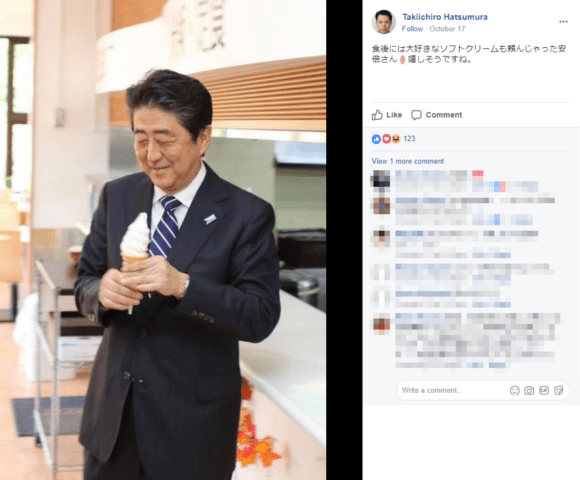


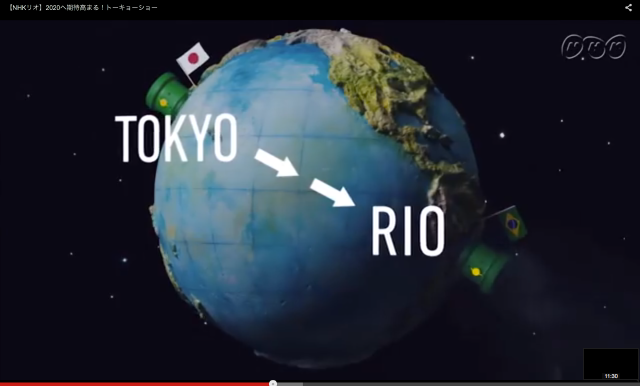




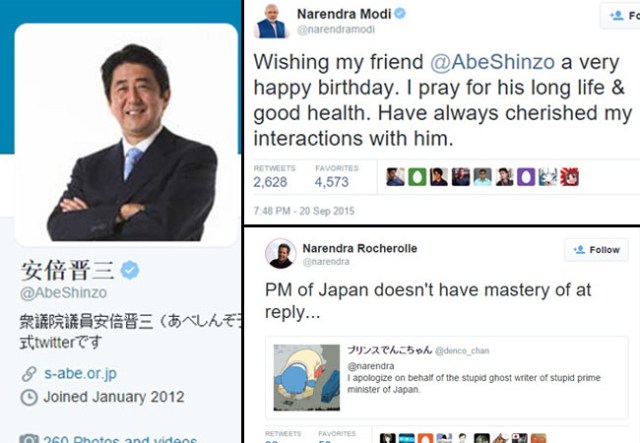
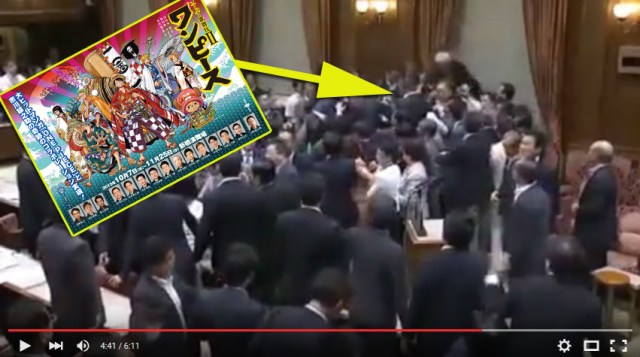


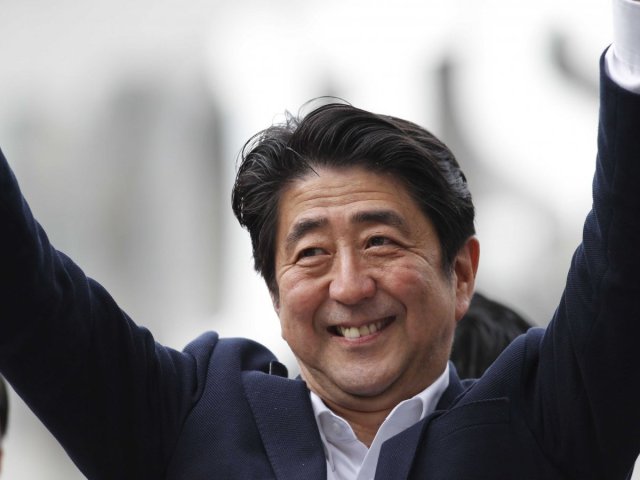

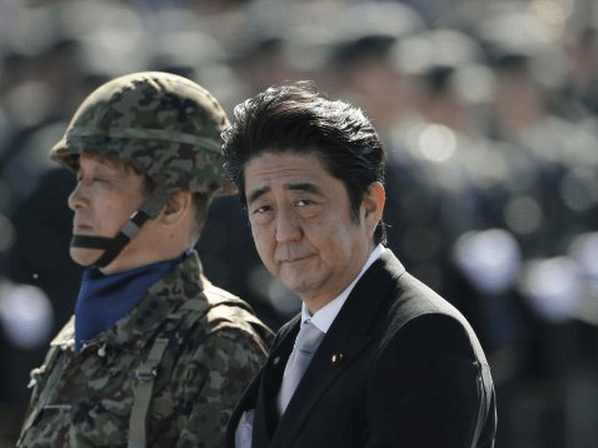
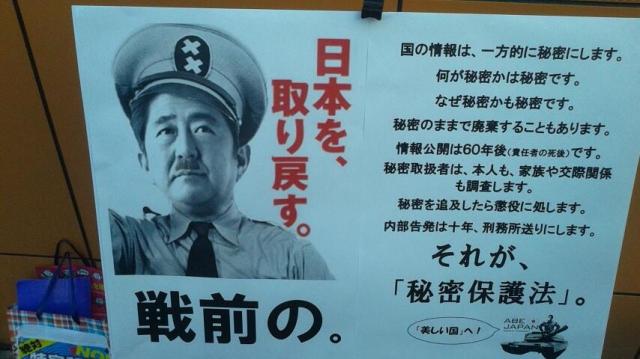
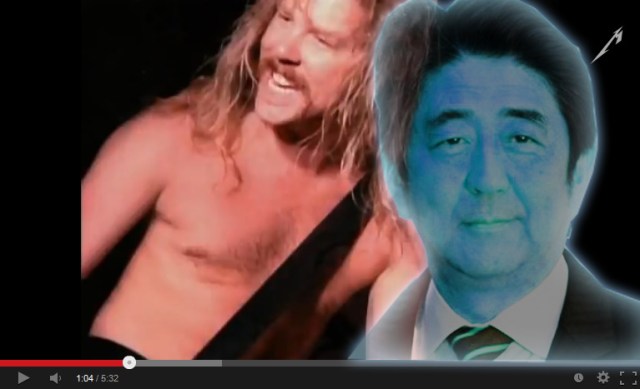
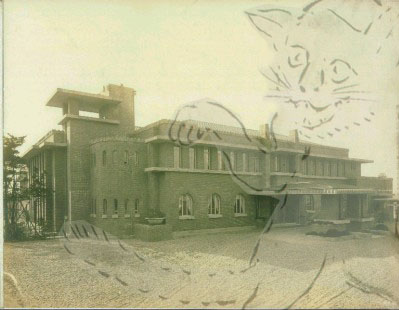
 Starbucks Japan ready to get Year of the Horse started with adorable drinkware and plushies【Pics】
Starbucks Japan ready to get Year of the Horse started with adorable drinkware and plushies【Pics】 7 great places to see Mt. Fuji from without having to climb it
7 great places to see Mt. Fuji from without having to climb it Japanese thug wear from Birth Japan perfect for those breaking bad next year
Japanese thug wear from Birth Japan perfect for those breaking bad next year We found possibly the quietest Japanese-style hotel in Tokyo’s bustling Shinjuku district
We found possibly the quietest Japanese-style hotel in Tokyo’s bustling Shinjuku district Cute Animals Enjoy Hot Water Massage Therapy in Japan 【Video】
Cute Animals Enjoy Hot Water Massage Therapy in Japan 【Video】 Oodles of noodles! Udon chain pays homage to all 47 prefectures of Japan with 47 dishes【Photos】
Oodles of noodles! Udon chain pays homage to all 47 prefectures of Japan with 47 dishes【Photos】 We tried super spicy wasabi ramen and yakisoba that’s rumored to make anyone cry【Taste Test】
We tried super spicy wasabi ramen and yakisoba that’s rumored to make anyone cry【Taste Test】 Convenience store Mini Stop’s new Gyoza Dog is must-try for all Gyoza fans! 【Taste test】
Convenience store Mini Stop’s new Gyoza Dog is must-try for all Gyoza fans! 【Taste test】 Rent an entire folk house in Japan, surrounded by nature just outside Tokyo
Rent an entire folk house in Japan, surrounded by nature just outside Tokyo Studio Ghibli bento box collections released just in time for hanami sakura-viewing picnics
Studio Ghibli bento box collections released just in time for hanami sakura-viewing picnics Disillusionment at Tsukiji’s tourist-target prices led us to a great ramen restaurant in Tokyo
Disillusionment at Tsukiji’s tourist-target prices led us to a great ramen restaurant in Tokyo Japan may add Japanese language proficiency, lifestyle classes to permanent foreign resident requirements
Japan may add Japanese language proficiency, lifestyle classes to permanent foreign resident requirements Lacquerware supplier to emperor of Japan and Pokémon team up for new tableware
Lacquerware supplier to emperor of Japan and Pokémon team up for new tableware Starbucks Japan releases new zodiac chilled cup drink for 2026
Starbucks Japan releases new zodiac chilled cup drink for 2026 7-Eleven Japan’s ramen-cooking robot whipped us up a bowl of noodles【Taste test】
7-Eleven Japan’s ramen-cooking robot whipped us up a bowl of noodles【Taste test】 Cyberpunk anime meets traditional culture in Ghost in the Shell gold leaf Japanese changing screens
Cyberpunk anime meets traditional culture in Ghost in the Shell gold leaf Japanese changing screens Hello Kitty Choco Egg figures are an adorable trip through three periods of Japanese pop culture【Pics】
Hello Kitty Choco Egg figures are an adorable trip through three periods of Japanese pop culture【Pics】 Japan’s otoshidama tradition of giving kids money at New Year’s gets a social welfare upgrade
Japan’s otoshidama tradition of giving kids money at New Year’s gets a social welfare upgrade Japan’s human washing machines will go on sale to general public, demos to be held in Tokyo
Japan’s human washing machines will go on sale to general public, demos to be held in Tokyo 7-Eleven Japan starts new temporary luggage storage service in over 300 branches
7-Eleven Japan starts new temporary luggage storage service in over 300 branches Starbucks teams up with 166-year-old Kyoto doll maker for Year of the Horse decorations【Photos】
Starbucks teams up with 166-year-old Kyoto doll maker for Year of the Horse decorations【Photos】 Tokyo considering law requiring more trash cans following litter increase in heavily touristed area
Tokyo considering law requiring more trash cans following litter increase in heavily touristed area Tokyo’s Tsukiji sushi neighborhood asks tour groups to stay away for the rest of the month
Tokyo’s Tsukiji sushi neighborhood asks tour groups to stay away for the rest of the month Nintendo’s Kirby now delivering orders at Kura Sushi restaurants, but not in Japan
Nintendo’s Kirby now delivering orders at Kura Sushi restaurants, but not in Japan Tokyo event lets you travel back in time, for free, to celebrate 100 years since Showa era start
Tokyo event lets you travel back in time, for free, to celebrate 100 years since Showa era start Sanrio theme park in Japan announces plans to expand into a Sanrio resort
Sanrio theme park in Japan announces plans to expand into a Sanrio resort Stamina-destroying “Paralysis Noodles” are Tokyo’s newest over-the-top ramen innovation
Stamina-destroying “Paralysis Noodles” are Tokyo’s newest over-the-top ramen innovation Survey asks foreign tourists what bothered them in Japan, more than half gave same answer
Survey asks foreign tourists what bothered them in Japan, more than half gave same answer Japan’s deadliest food claims more victims, but why do people keep eating it for New Year’s?
Japan’s deadliest food claims more victims, but why do people keep eating it for New Year’s? We deeply regret going into this tunnel on our walk in the mountains of Japan
We deeply regret going into this tunnel on our walk in the mountains of Japan Studio Ghibli releases Kodama forest spirits from Princess Mononoke to light up your home
Studio Ghibli releases Kodama forest spirits from Princess Mononoke to light up your home Major Japanese hotel chain says reservations via overseas booking sites may not be valid
Major Japanese hotel chain says reservations via overseas booking sites may not be valid Put sesame oil in your coffee? Japanese maker says it’s the best way to start your day【Taste test】
Put sesame oil in your coffee? Japanese maker says it’s the best way to start your day【Taste test】 No more using real katana for tourism activities, Japan’s National Police Agency says
No more using real katana for tourism activities, Japan’s National Police Agency says The top 10 annoying foreign tourist behaviors on trains, as chosen by Japanese people【Survey】
The top 10 annoying foreign tourist behaviors on trains, as chosen by Japanese people【Survey】 Starbucks Japan reveals new sakura drinkware collection, inspired by evening cherry blossoms
Starbucks Japan reveals new sakura drinkware collection, inspired by evening cherry blossoms Oodles of noodles! Udon chain pays homage to all 47 prefectures of Japan with 47 dishes【Photos】
Oodles of noodles! Udon chain pays homage to all 47 prefectures of Japan with 47 dishes【Photos】 We tried super spicy wasabi ramen and yakisoba that’s rumored to make anyone cry【Taste Test】
We tried super spicy wasabi ramen and yakisoba that’s rumored to make anyone cry【Taste Test】 Convenience store Mini Stop’s new Gyoza Dog is must-try for all Gyoza fans! 【Taste test】
Convenience store Mini Stop’s new Gyoza Dog is must-try for all Gyoza fans! 【Taste test】 Rent an entire folk house in Japan, surrounded by nature just outside Tokyo
Rent an entire folk house in Japan, surrounded by nature just outside Tokyo Studio Ghibli bento box collections released just in time for hanami sakura-viewing picnics
Studio Ghibli bento box collections released just in time for hanami sakura-viewing picnics Aggressive upskirt photographers swallow up cosplay trio at Comiket【Video】
Aggressive upskirt photographers swallow up cosplay trio at Comiket【Video】 Sylvanian Families x Technics—we discover DJ turntable replicas are perfect for mini animal raves
Sylvanian Families x Technics—we discover DJ turntable replicas are perfect for mini animal raves 7-Eleven Japan’s ramen-cooking robot whipped us up a bowl of noodles【Taste test】
7-Eleven Japan’s ramen-cooking robot whipped us up a bowl of noodles【Taste test】 A message from the future: Doraemon tells us what will happen if we stay home and wash our hands
A message from the future: Doraemon tells us what will happen if we stay home and wash our hands More Than a Capsule Stay: Why Solo Travelers Choose “global cabin Yokohama Chinatown”
More Than a Capsule Stay: Why Solo Travelers Choose “global cabin Yokohama Chinatown” “Yandere Simulator” game lets you release your jealous schoolgirl rage and murder love rivals
“Yandere Simulator” game lets you release your jealous schoolgirl rage and murder love rivals